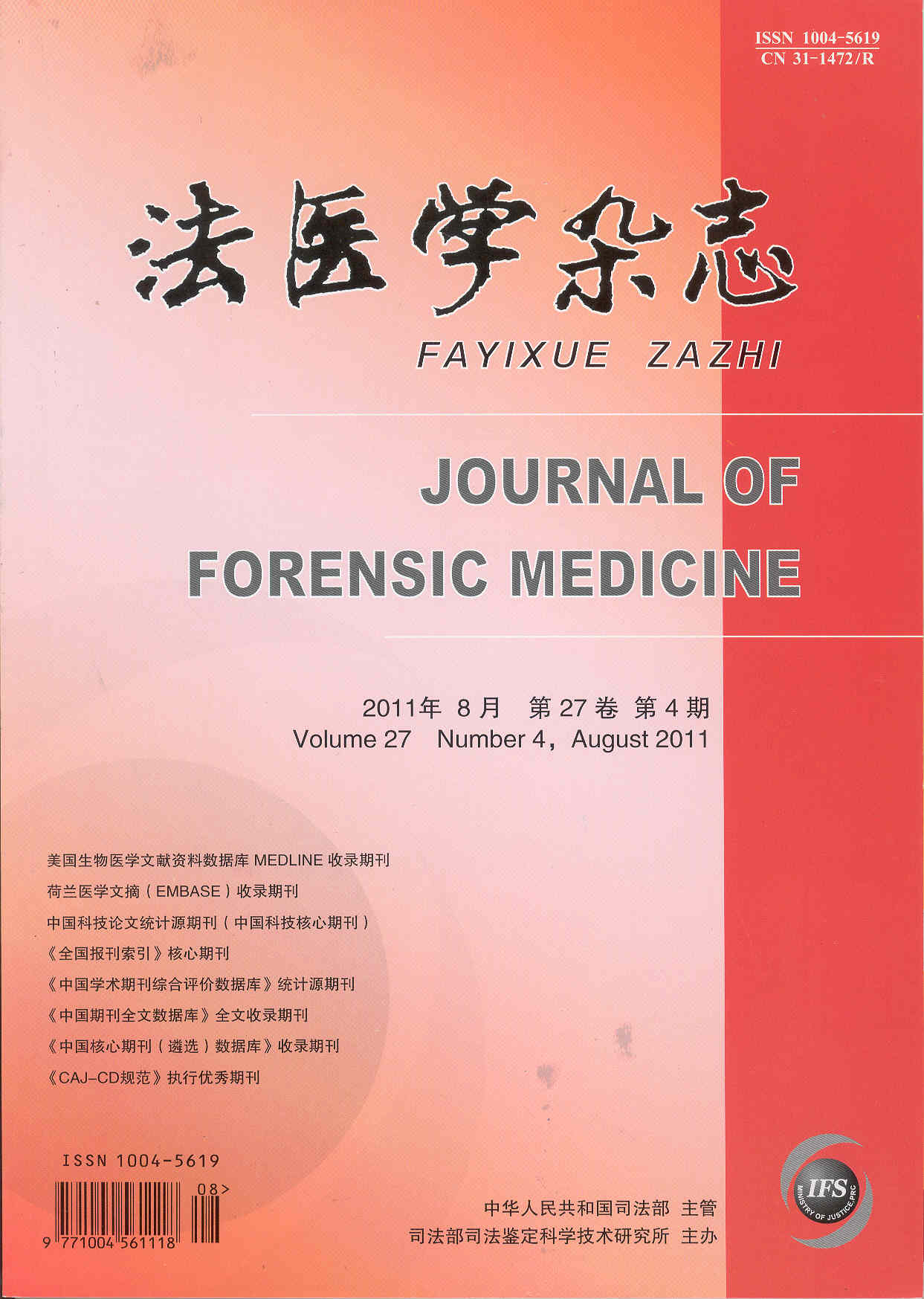|
|
Comparison of mtDNA Extracting Methods for Common Sarcosaphagous Insects
CHEN YAO-QING, GUO YA-DONG, LI MAO-ZHI, ET AL
2011, 27(4):
265-270.
DOI: 10.3969/j.issn.1004-5619.2011.04.007
Objective To compare effects of three different methods for mtDNA extraction from common sarcosaphagous insects including cetyl trimethyl ammonium bromide (CTAB) method, sodium dodecyl sulfate-potassium acetate (SDS-KAc) method and sodium dodecyl sulfate-proteinase K (SDS-PK) method. Methods Seventy-two insects from four species [Chrysomya megacephala (Fabricius, 1784), Eusilpha bicolor (Fairmaire, 1896), Paraeutrichopus pecoudi (Mateu, 1954), Vespa velutina (Lepeletier, 1836)] were collected from the corpses of the rabbits in Changsha district. The total DNA of above samples was extracted by CTAB, SDS-Kac and SDS-PK methods. The purity and concentration of DNA were examined by protein-nucleic acid spectrophotometry, and mtDNA were amplified by specific primers and PCR products were detected by agarose gel electrophoresis. Then PCR products were sequenced and subsequently uploaded to GenBank. Results mtDNA was successfully extracted with three methods from most of the samples. The SDS-PK method was better in DNA purity compared to other methods and the CTAB method was superior in extracting DNA from old samples, while SDS-KAc method showed no significant difference for extraction effects of different samples. Conclusion The most appropriate method should be chosen depending on different situations. SDS-PK method is expected to obtain high-quality DNA, while CTAB method is preferred in extracting obsolete samples. SDS-KAc method is low cost and can be used in various kinds of preliminary experiments.
Related Articles |
Metrics
|


